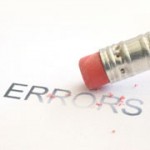Filing the Wrong Payroll Tax Form Affects the Statute of Limitations

In a Legal Advice Issued by Field Attorneys (LAFA), IRS has provided guidance regarding the effect on the running of the statute of limitations for assessments, of:
- A taxpayer filing Form 941, the quarterly employment tax return, when he was supposed to file Form 944, the annual employment tax return; and
- The taxpayer making the opposite mistake.
Background Information. Any employer who pays wages is required to withhold and pay to IRS both the employee share of tax under the Federal Insurance Contributions Act (FICA) and federal income tax withholding, and pay the employer share of FICA taxes. Generally, the employer liable for FICA taxes and income tax withholding must file a quarterly return on Form 941, Employers Quarterly Federal Tax Return, for every tax period for which wages are paid. However, employers whose estimated annual employment tax liability is $1,000 or less are eligible to file Form 944, Employers Annual Federal Tax Return, rather than quarterly Forms 941.
The limitations period during which the IRS must make an assessment generally begins to run with the filing of a valid return for a tax for which a return must be filed. The tax code states that, for purposes of determining the statute of limitations on assessments, employment tax returns which include FICA taxes or income tax withholding for a calendar year, that are filed prior to April 15th of the succeeding calendar year, are deemed to be filed on April 15th of the succeeding year. Thus, the three-year statute of limitations period for issuing assessments does not begin prior to April 15th of the succeeding calendar year, even if the employer files a valid employment tax return prior to that date.
For example, the statute of limitations for the four quarterly 2015 Forms 941 will not begin until April 15, 2016.
To determine if a return is “valid” for purposes of determining the statute of limitations period, courts will look to see if the return:
- Provides sufficient data to calculate tax liability;
- Purports to be a return;
- Is an honest and reasonable attempt to satisfy the requirements of the tax law; and
- Is executed under penalty of perjury.
This is generally referred to as the “Beard formulation” after a 1984 U.S. Tax Court case. If a return meets the Beard formulation, it is a valid return for purposes of the three-year period of limitations on assessment.
IRS Guidance in Different Situations
The IRS Legal Advice issued by Field Attorneys looked at three different situations. (LAFA 20152101F) Here are the scenarios, along with the guidance on the application of the statute of limitations.
| Situation | IRS Guidance |
|
Assuming the Forms 941 purport to be returns, are an honest and reasonable attempt to satisfy the filing requirements, are signed under penalty of perjury, and can be used to determine the employer’s annual FICA and income tax withholding tax liability, the Forms 941 meet the Beard formulation and should be treated as valid returns for purposes of starting the period of limitations on assessment. Because the Forms 941 were filed before April 15 of the succeeding year, the deemed filing date is April 15 of the succeeding calendar year. |
|
An argument can be made that the Forms 941 for the first and second quarters of the tax year constitute valid returns under the Beard formulation since they purport to be returns and are signed under penalty of perjury. However, given that the employer’s FICA and income tax withholding tax liability for the third and fourth quarters won’t necessarily be equal to that reported for the first two quarters, the Forms 941 arguably aren’t sufficient for purposes of determining the employer’s annual FICA and income tax withholding tax liability and may not be honest and reasonable attempts to satisfy the tax law. Amounts reflected on the Forms 941 must be assessed within three years of April 15 of the succeeding calendar year. |
|
Assuming the Form 944 purports to be a return, is an honest and reasonable attempt to satisfy the filing requirements, can be used to determine the employer’s annual FICA and income tax withholding tax liability, and is signed under penalty of perjury, this employer’s Form 944 meets the Beard formulation and should be treated as a valid return for purposes of the period of limitations on assessment. Because the Form 944 was filed on time, the deemed filing date is April 15 of the succeeding calendar year. |




